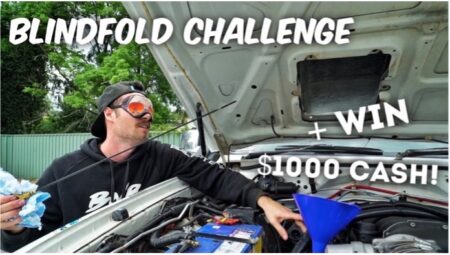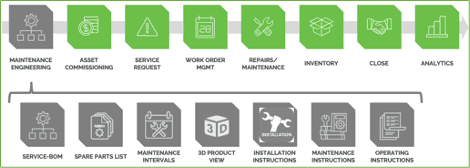I had the privilege to present to the Advanced Manufacturing Research Centre (AMRC) of the University of Sheffield. Their website is packed with tags like “tomorrow done better”, “shaping the future of manufacturing”, and “world-leading technology experts”. What better place to discuss the topic of Design-for-Service with an audience immersed in Design-for-Manufacturability (DFM)? Allow me to share a back-to-the-future story.
Blindfolded
About two years back, we interviewed a contingent of field service technicians. We asked them what makes them happy and what puts them off.
In short, technicians love to be the hero-on-site, fixing technology and keeping the world running.
On the flip side, they dislike going on a job blindfolded, with their hands cuffed and not being empowered to do their job.
To elevate a technician’s role from reactive fire-fighter to proactive savior, first and foremost, we need to give them tools to see. This includes understanding what the product is, its current state, and how it is being utilized. Rather than immediately entering repair mode, it’s crucial to provide engineers with access to product engineering data, using this information so that they can diagnose the problem effectively. This is where the handover between engineering and service unfolds.
Intellectual property
When Engineering designs a product, they have specific use cases, product output, and performance in mind. For an original equipment manufacturer (OEM) the entire design and engineering thought process is considered intellectual property (IP), leading to the creation of great products. It’s the IP that sets their product apart from the competition.
Then those products go into the field and buyers start using them. This is where the rubber hits the road. Does the product in the field behave like it was designed to in the development lab?
Products in the field are best taken care of by Service. The more information Service knows about the engineering IP, the more efficient and effective Service can be in managing and supporting the operational lifecycle of the product. When mastered, you can even use Service as the primary revenue model.
The IP can also flow from Service to Engineering. Throughout the operational lifecycle of a product, the Service team has multiple touch points with the product. Each touch point generates data. This data is on the actual behavior and performance of the product.
Now we have two sets of data; the planned data from Engineering and the actual data gathered from Service. This opens up a plethora of instruments for continuous improvement. This improvement includes data for personnel in engineering, quality control, sales, product planning, supply chain, service sales, and service delivery.
Handover from Engineering
Not only in this Advanced Manufacturing Research Centre (AMRC) discussion– but in practically all conversations we have with OEMs– we often get to a point where product focus and service focus end up on two ends of a scale. It’s as if they are being treated as mutually exclusive; which should not be the case.
There is a middle ground. Through the use of technology to hand over the engineering IP to Service and have Service embed that IP in their service execution processes we remove the blindfold. This is best illustrated through the function of maintenance engineering.

Maintenance engineering defines how to maintain the product, it sustains the product performance and output. Service translates the engineering-BoM into a service-BoM, identifies spare parts & kits, and creates preventive maintenance schemas. They also bundle installation, maintenance, and operating manuals.
The good news is, the technology to hand over engineering data to Service in a clear and digestable format is there. Even better, most OEMs have a maintenance engineering function created in their IP making the barrier for entry low.
Back to the Future
Since November last year, I’ve been using the maintenance engineering narrative more forthrightly. I’m fascinated by the responses I get from customers, prospects, and researchers. First, a deafening silence, then comprehension and realization. It’s all so logical. It’s all so prognostic. So why haven’t we jumped on the bandwagon?
To get a feeling of the engineering-service-handshake in 2023, we spoke to 50 service business leaders at Copperberg Field Service Forum. We started with an easy question. How many pages does the maintenance manual of a medium complex product have in your organization? The response: anything between 20-2,000 pages.
We progressed to the more difficult questions. What information is in that document? Where is the document stored? Who reads it? Why? Why not? Does the content bring value? Should one use it? The conversation was not meant to create anxiety, but to make one see how existing engineering IP could be leveraged better in the service domain.
It’s today’s technology that makes it possible to act on the handover from engineering to service, to apply the maintainability concepts in service execution, and to reap the business benefits. This puts the ball back in the court of OEMs. Do you want to remain silent or do you want to act now? Do you want to walk the talk?
I am guessing that this will not be our last conversation on this topic.
See why service needs to be a team sport: Learn More


Share this: